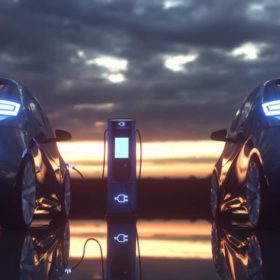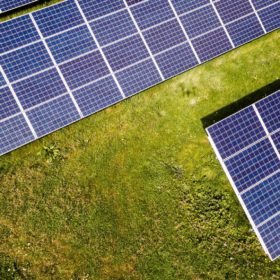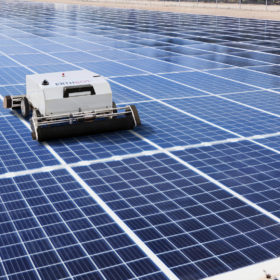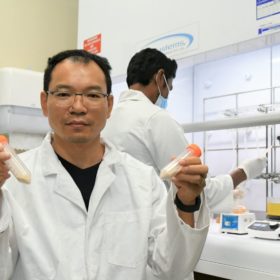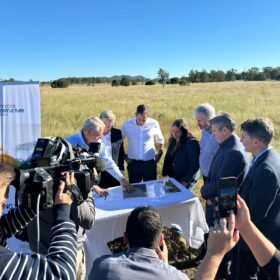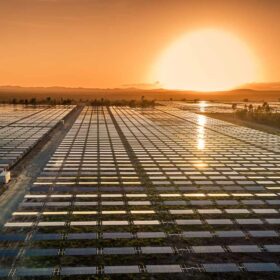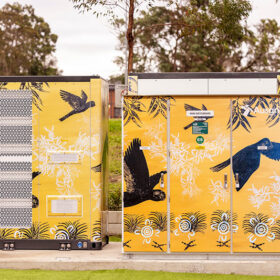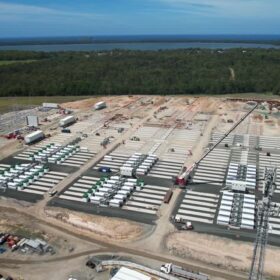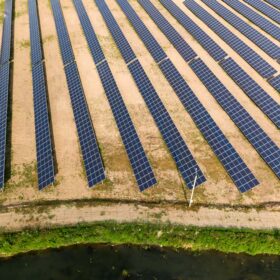Monash researchers announce lithium-sulphur battery breakthrough
Researchers from Australia’s Monash University have created a new generation of lithium-sulfur batteries that they say provides a cheaper, cleaner and faster-charging energy storage solution that outlasts lithium-ion alternatives and is rechargeable hundreds of times without failing.
Weekend read: The changing geopolitics of green hydrogen
With 90% of world economies committed to net zero targets, the disruptive nature of the energy transition is becoming clear. Climate targets require us to triple renewable energy capacity by 2030, phase out coal by 2040, end fossil fuel subsidies, and ensure support for a just transition. While hydrogen is sure to be a key technology in this energy transition, the exact role it will play is not yet clear, reports Felicia Jackson.
Fortescue accelerates plans for gravity-charged electric powertrain
Australian-based mining giant Fortescue has commenced the development of an electric train that recharges itself using gravity after the resources company this week settled its $310 million purchase of UK-based technology and engineering services business Williams Advanced Engineering.
‘The major solar players will shift from PERC to TOPCon’
US analyst Clean Energy Associates made some notable predictions in its Q4 survey of the world solar manufacturing market, including echoing predictions made elsewhere that the new polysilicon production capacity coming online now will help arrest the spike in solar panel prices.
Rackless, earth-mounted solar provider earns funding
Erthos secured a US$17.5 million (AU$24 million) Series B from an investor who participated in the startup of Tesla and SpaceX. The utility-scale solar company has a 2.5GW project pipeline.
Organic battery progress brings Adelaide researchers tantalisingly close to full biodegradability
The realisation of biodegradable batteries is a step closer thanks to research from South Australia’s Flinders University, which has developed a 2.8V organic polymer battery. While this battery was made from synthetic polymers, research lead Dr Zhongfan Jia told pv magazine Australia the team’s future iterations will source “materials directly from nature” saying this promises to reduce waste and reliance on mined materials and could have novel applications in fields like biotech.
Airbus plans flight test with direct combustion engine fuelled by hydrogen
Elsewhere, Chinese researchers have synthesised ultrafine Pd100-xCux nanodot-modified TiO2 photocatalysts that display optimised energy barrier for interfacial hydrogen desertion, which reportedly exhibits excellent H2-evolution activity and stability, and Mitsubishi Heavy Industries has presented its plans to establish the Takasago Hydrogen Park, calling it the world’s first centre for validation of hydrogen-related technologies, from hydrogen production to power generation.
Novel Australian project examines if renewable energy machines can protect coastlines
What can wave energy converters do that no other form of renewable energy can? Well, they can remove waves’ energy. For a country like Australia, where much of our population and wealth is concentrated on coastlines evermore frequently battered by extreme weather, this proposition is particularly attractive. Especially if the technology is able to offer both protection and green electricity without radically altering marine ecosystems and aesthetics. “No one has looked at what we’re looking at before: combining power generation with coastal protection and trying to control it,” Professor Richard Manasseh told pv magazine Australia.
Hydrogen-powered boat to be sailing on Australian seas within 18 months
Australian maritime hydrogen company Poseidon Marine H2 says it expects to have a hydrogen-powered boat in Australian waters within the next 18 months after bringing on board the principal engineers from Dynamic Efficiency.
Aussie researchers find best BIPV envelope design alternatives
Scientists in Australia have developed an optimisation framework for building-integrated photovoltaics that allows the selection of design variables according to user preferences. Their model considers PV-related features such as tilt angle, window-to-wall ratio (WWR), PV placement, and PV product type, as well as objective functions and constraints such as the net present value and the payback period.
